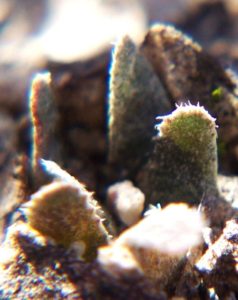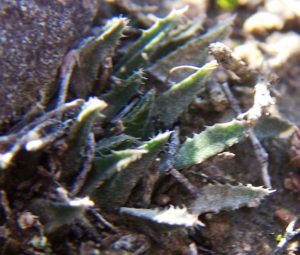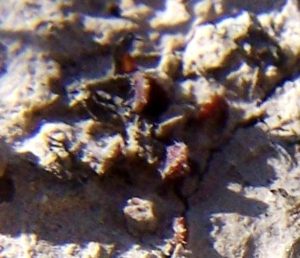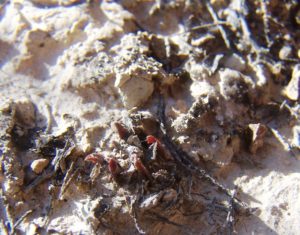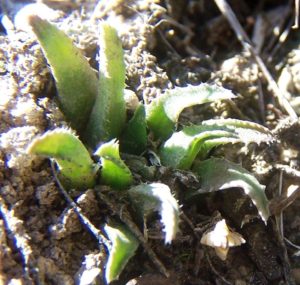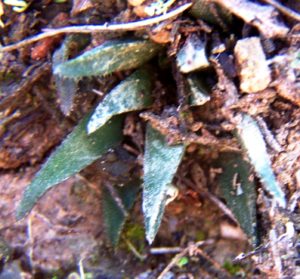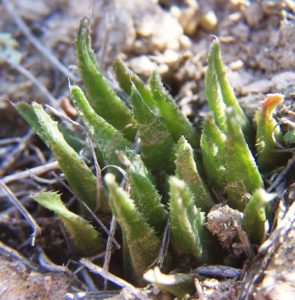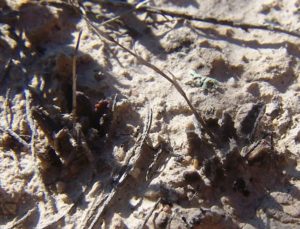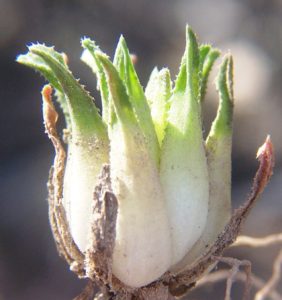117. 2020.03.31 – This is just north of Herbertsdale under renosterbos on shale. A serious lack is pictures of a population nearby on a very steep, north-facing crumbling clay ‘cliff’ with karoid bushveld plants growing wherever they can fit. Here the plants make enormous clumps and themselves are individually large to leaves 60-70mm. Also missing are pictures from a short way to the south-west on an east-facing cliff of conglomerate. There the plants are small, solitary and dark-colour red 😊. These demonstrate the impact of habitat. Of course also seriously lacking is a species definition and agreement on the issue. Systems, systems, systems.
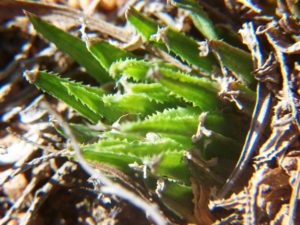

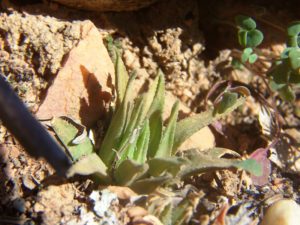


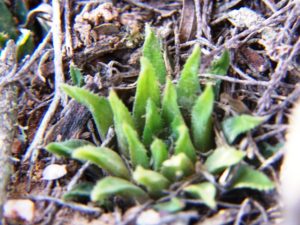

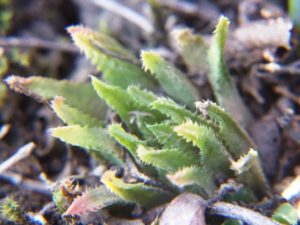


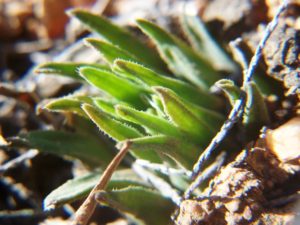
118. 2020.03.31 – This is chloracantha further south at Johnson’s Post with ‘pygmaea’. Large dense clumps seemingly holding clay pedastals together. These are associations of systems and in my opinion very significant in recognising where species stop and start. Not that this simplifies the problem. Incidentally chloracantha in a small green form also occurs in the Gouritz River gorge through the Langeberg.

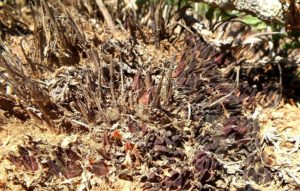
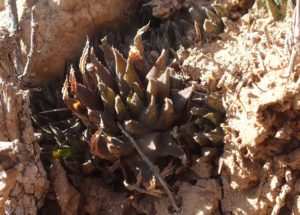

119. 2020.04.01 – Chloracantha occupies an incredible range of habitats and varies accordingly. These are it at Cooper Siding in feldspathic sandstone. Not far away it is also in transitional zone to shale and the plants also looking a bit different. In both cases it is with “pygmaea” and I have see hybrids despite the season difference in flowering times. Curiously I was once asked … “how do you know it is a hybrid?” Well I do not know how to answer that. It is like asking, “How do you know you which is your left foot?”


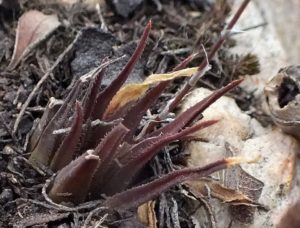
Lawrence Loucka – Please say some more about hybrids. ‘I know it when I see it.’ may be true but how to confirm? What do you see – parent proximity, morphology, flowering overlap, habitat? If not hybrid, then what?
Bruce Bayer – I think you are asking me to identify my left foot. What can it possibly be if it is not derived from the plants before your eyes? I forget now the name of the hybridity test based on mensuration and statistical analysis. I tried to use it on what were such obvious hybrids between herbacea and reticulata – and as you well know in H. mirabilis var sublineata, getting significance requires an inordinate sample size. So of course it is parent proximity. whereabouts of the “hybrid”. And what is difference in flowering time where there is 4-5 months between peak flowering time of each putative parent and a flowering time that can be acted on the the seasonal rainfall – and individual plants that simply do their own thing. With DNA we cannot even separate the species so how do we use that? It comes down to nitpicking and finding a way to discount the obvious. How do you confirm that all the plants before your eyes are two species when you have no definition of what the word means and cannot specify the actual criteria that are common to the respective entities? That is why it is possible to just come out with names like hammeri, joleeniae, vincentii etc. and find an innocent accepting audience? 😄 Best way of looking at the issue.
Jakub Jilemicky – Aren’t these floribunda v. dentata?
Bruce Bayer – Jakub, I would like you to detail the differences between floribunda and chloracantha. There seems to be a serious misconstrual of classification here. First you have to arrive at the species name and then at the next level down. In Haworthia I have virtually abandoned “nextleveldown” because the species level is already confounded. You cannot get a variant of one species in a population of another where the populations and species are arranged and derived as they are in Haworthia. Can someone explain it better? Prof. Cronquist once asked of his taxonomic proteges and fellow experts…”Do we know what we are doing?” By and large haworthia taxonomists do not even seem to know what taxonomists even should be doing. 😄
Jakub Jilemicky – True, this group of plants are very challenging. I’m using your books as a source of taxonomy. I have seen quite a few population from Hartenbos in the East to Riversdale in the West. And I’m lucky to grow quite a big collection from many sources of this plants, so I can compare them both in cultivation and in nature. H. floribunda v. dentata seems for me to continue into chloracantha v. denticulifera. Around Gouritz river it is almost impossible for me to distinguish them. Towards Herbetsdale the same happens with chloracantha. There are a few characteristic true chloracantha populations north of town, others are resembling floribunda. Yes, there can be selected true TL plants, which are characteristic, but all between seems for me to be one big continuity🤷♂️
Bruce Bayer – Yes Jakub, it is not just this group. I think I actually generated the name floribunda var. dentata. In retrospect it was a stupid thing to do because there is no such a taxonomic entity IF you realize that “variety” should mean a population entity and not “variant” meaning individual variation – in which case “form” would be better? My posts are doing what you describe – showing that there is 1/2/3? big continuity/ies.

Bruce Bayer – Thanks Jakub – I also very recently posted toothed chloracantha at Copper Siding. I say chloracantha only because there are none of the stronger floribunda features i.e. smoother surfaces, rounded leaf-tips, keel absent for large part of leaf end, and greyish green. The outward turning leaves are more floribundoid than chloracanthoid and we cannot forget parksiana. If we could just get over this hurdle of talking sensibly about these obvious mismatches and evidences of continuity, we might begin to properly look at real problems like the Hex valley plants. the Prince Albert problems, grasp what Kaboega populations tell us and many more.
120. 2020.04.01 – Stay calm, be patient, all things will pass. I found I had pictures of ‘pygmaea vincentii‘ from Welgevonden = Lodewykskraal east Albertinia. Was there with Kobus and there were countless plants then – August 2008. They were not well drawn into the soil and perhaps very vulnerable to close grazing? In this crisis it is worth considering that nature does not need us and can smile at our puny efforts, destructive ways and thoughtless actions. Also bless us for the few things we may be doing right. It is all under control.

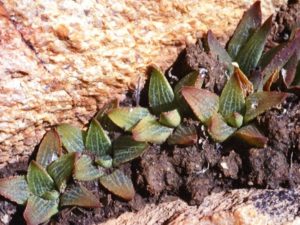
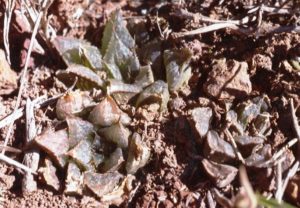
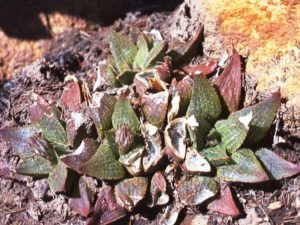
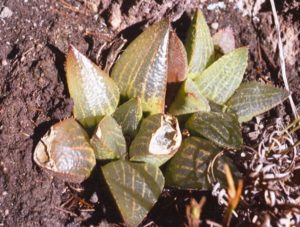
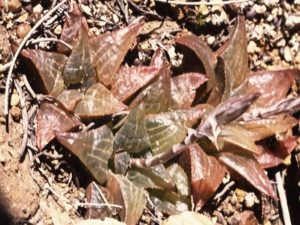


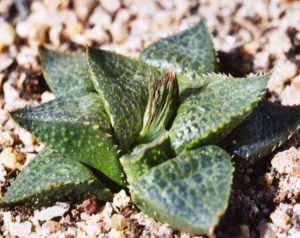
Frantisek Vesely – Hello Bruce, all these plants were growing on the same spot?
Bruce Bayer – Hello Frantisek. It is a north facing rocky slope about 1km wide and I remember many plants all along the slope in about a 50m wide band. That was 2008. This March we could only find 3 plants very shrunken into rock cracks. It is possible that others are simply sand and debris covered in a very desiccated state and rain may bring them out.Jakub Jilemicky – I was there in 2011 and after few hrs search we found only 5-6 plants in rock crevices…
Frantisek Vesely – Thank you. I would say there could be some interaction of var. esterhuizenii with var. turgida/suberecta. That would explain why the plants which are considered to be H. vincentii just look so odd but on the other hand they are somewhat intermediate between these two.
Bruce Bayer – Thank you Jakub – useful info
Bruce Bayer – Frantizek good observation. I wish I could express or, firstly, understand it better. It is not necessarily “interaction” but rather a question of distribution of genetic material on the basis that there is a single gene pool interconnected in some incomprehensible way and expressing itself on the basis of localised habitats. It is difficult to believe that at one time there were a great deal more populations and more gene exchange between them than there is now. Perhaps that was the case. The nearest “turgida” to vincentii is “rodinii” but we have the problem that here in the east the total gene pool is reducing from a mirabilis/retusoid (incl turgida) to retusoid (incl turgida)/ pygmaeoid (incl retusa/emelyaoid). Vincentii would represent the fade out of mirabilis via splendens and esterhuizenii. Dekenahii and fusca the fade out of retusa and fade in of pygmaea. It is something that needs exploration both literally and figuratively in the mind.
121. 2020.04.02 – This is a population from east of Herbertsdale. Here they grow in kaolinite and are buried up to their leaftips. Very much like those decaying white ‘pressure burst’ common in the Riversdale area and of course westwards. In the first picture of three clones, the one on the left is a plant from S Herbertsdale. How can you now name this population? There is something very wrong in the way we use and apply names? What do we mean by the word “species”. To say this population 3km E Herbertsdale has elements of parksiana and floribunda implies that they truly are different species. How would we know? ♦

